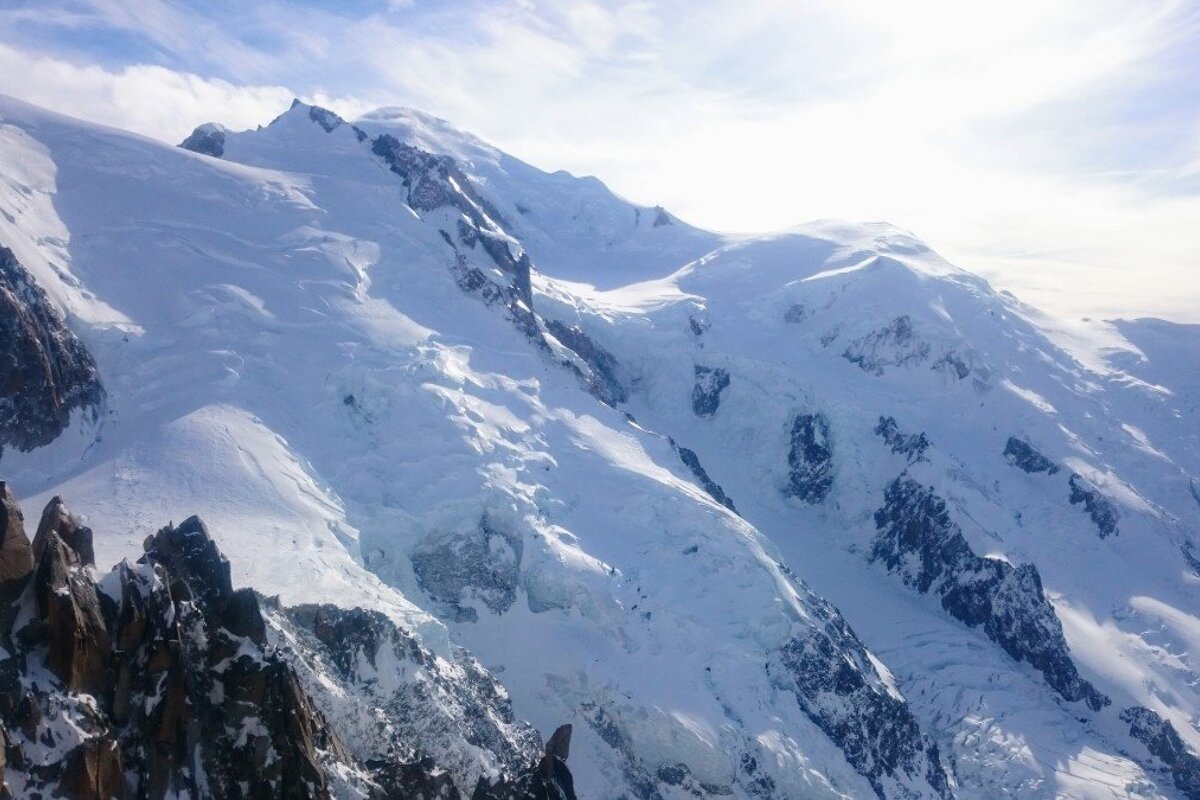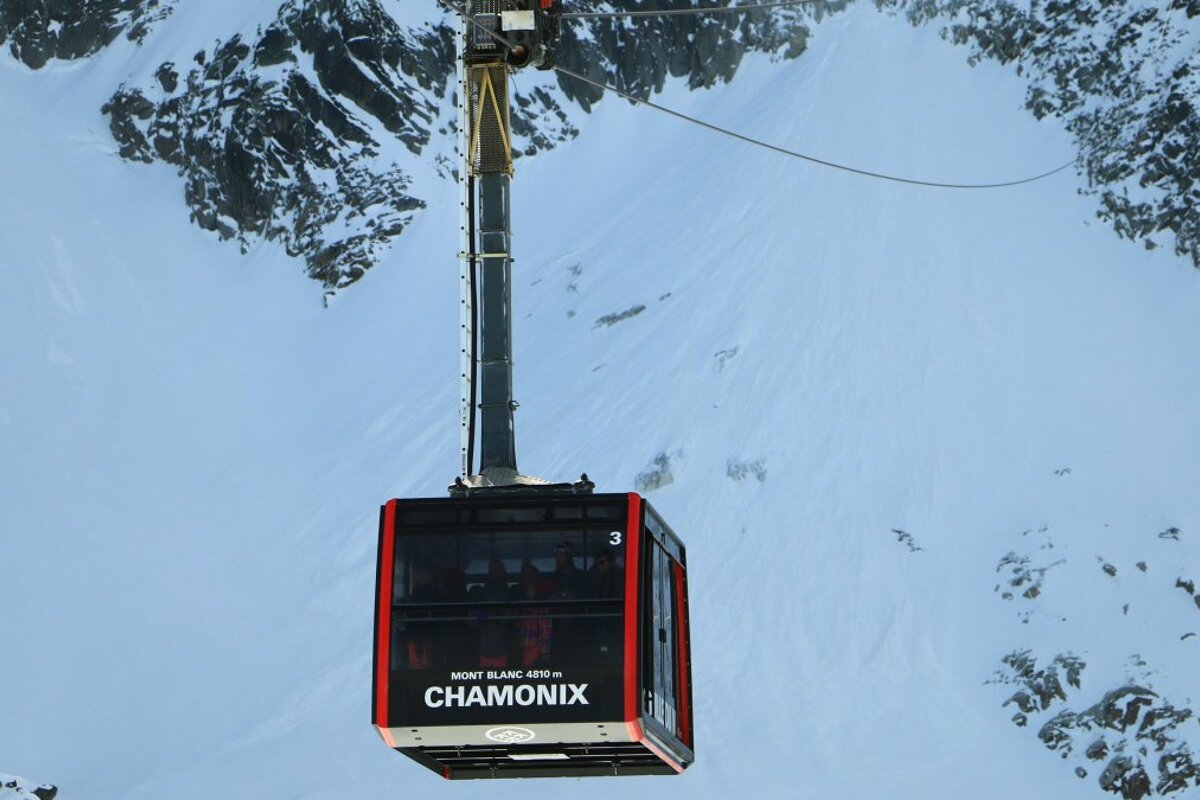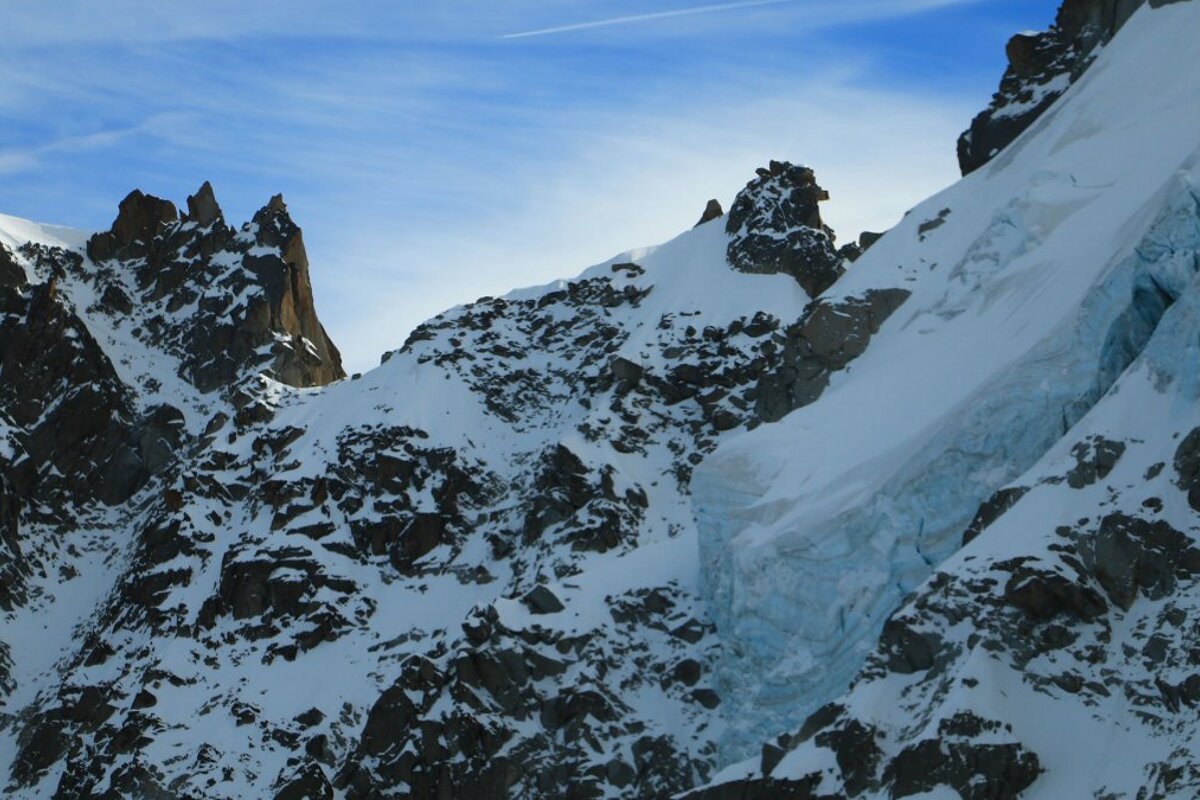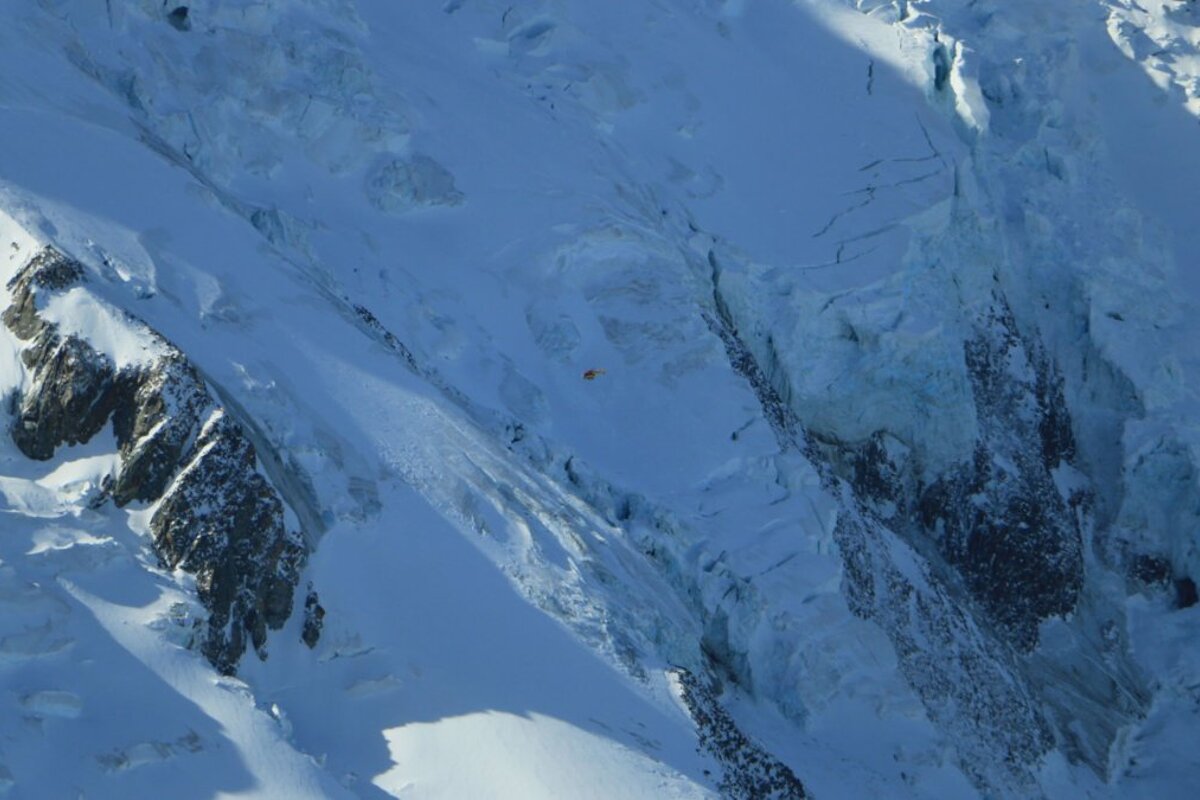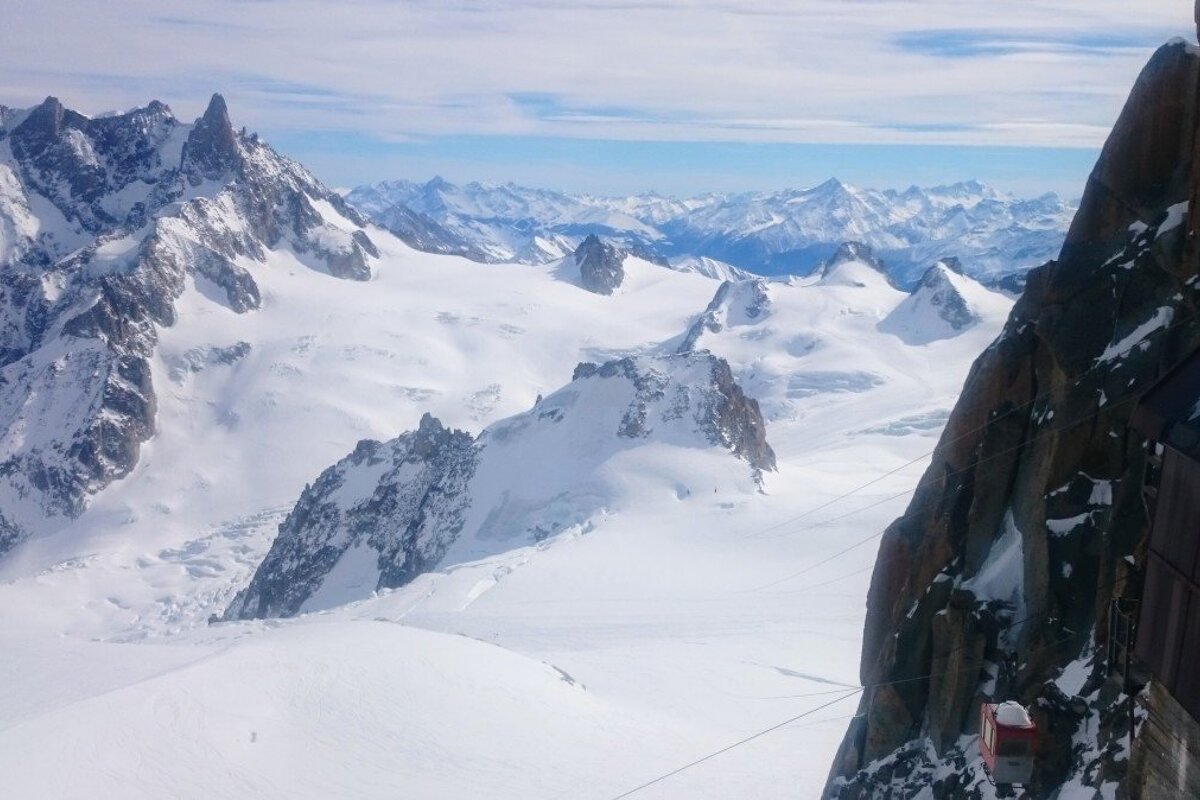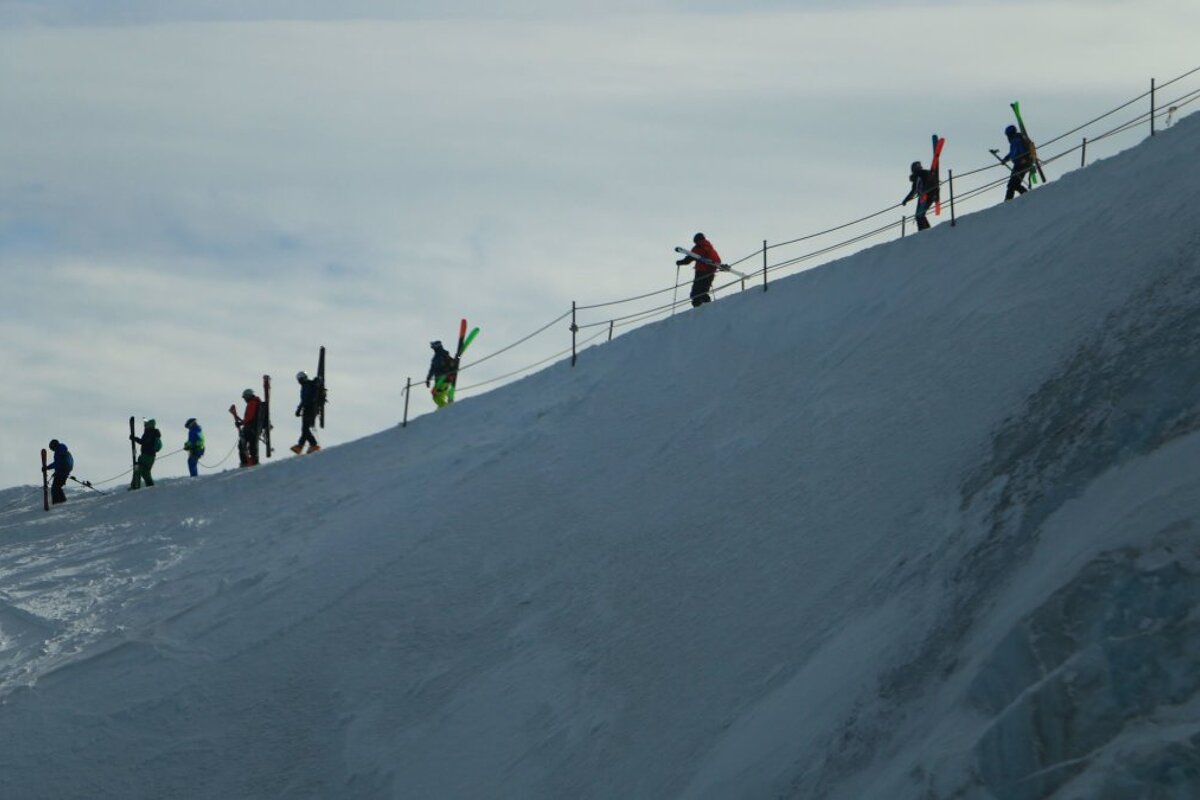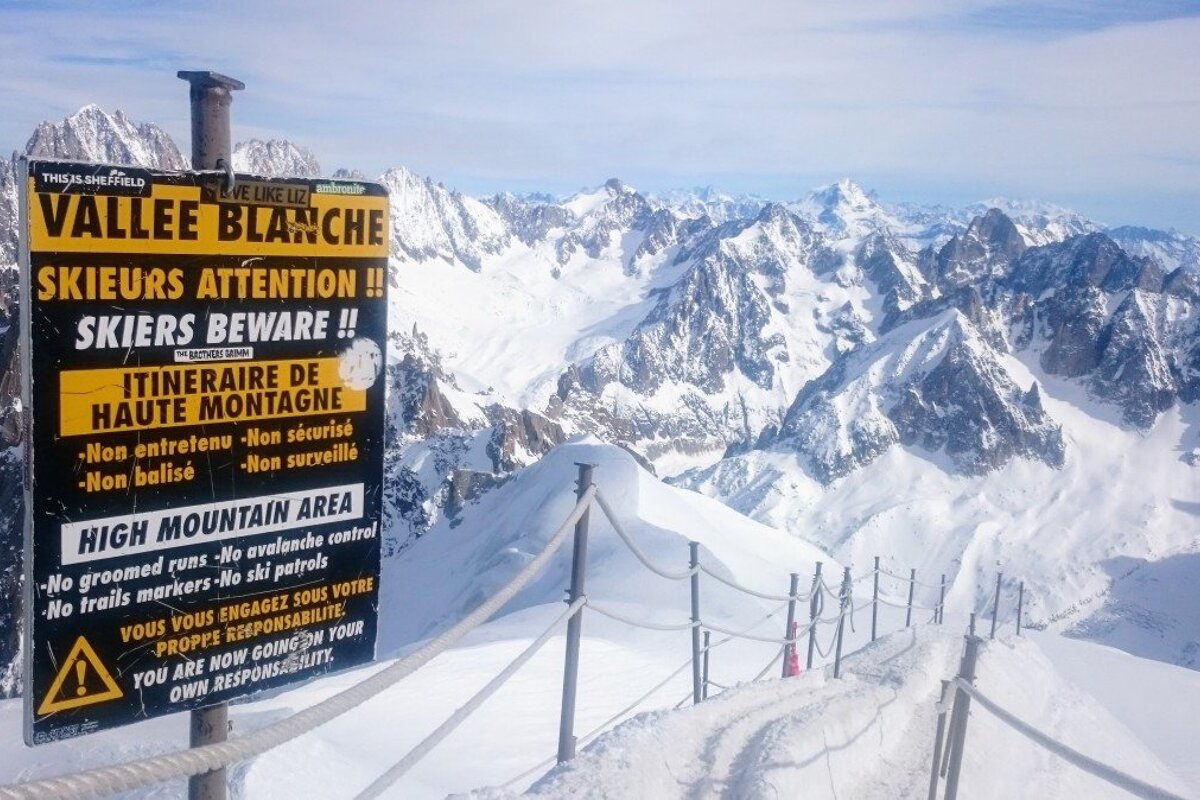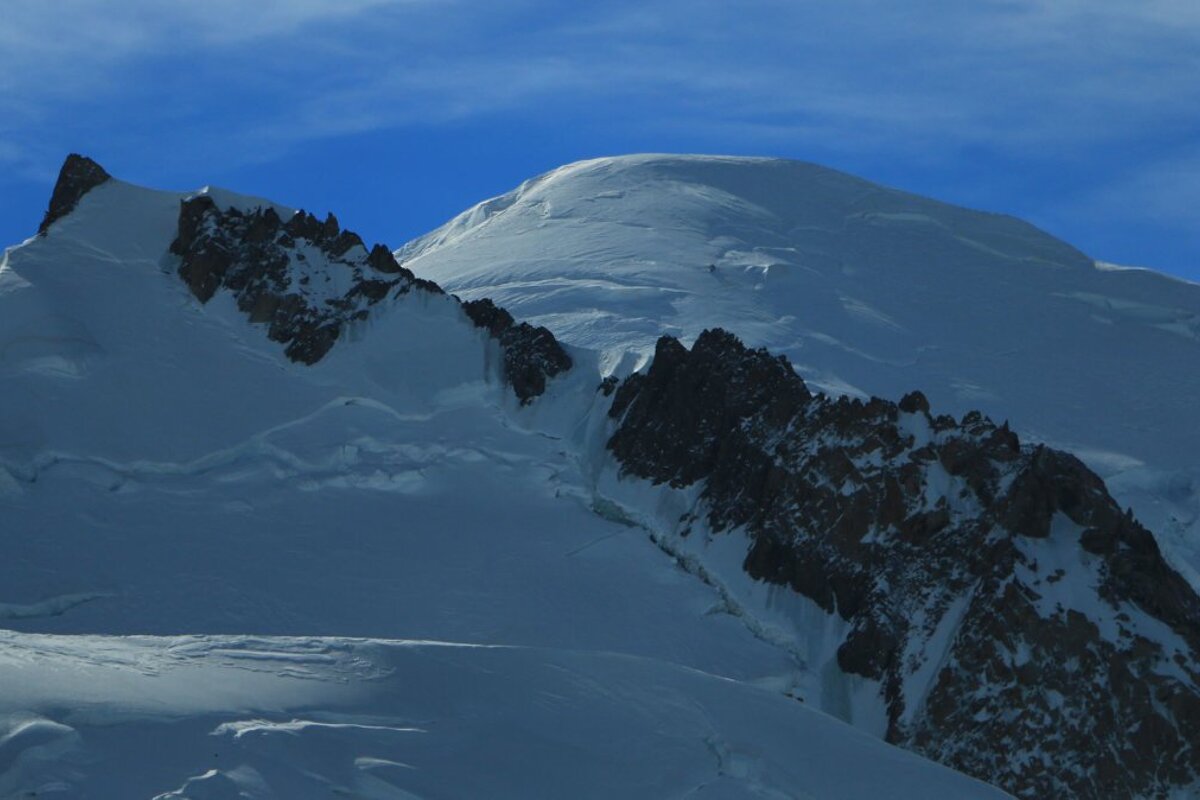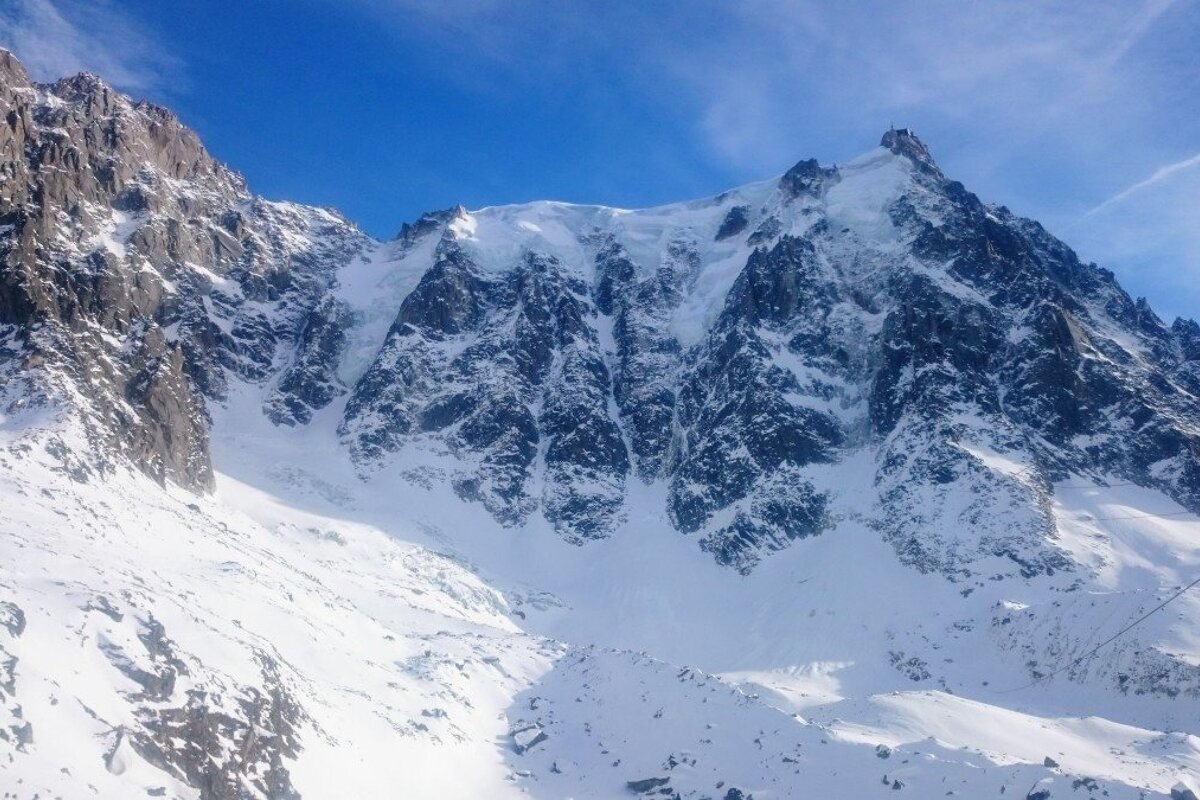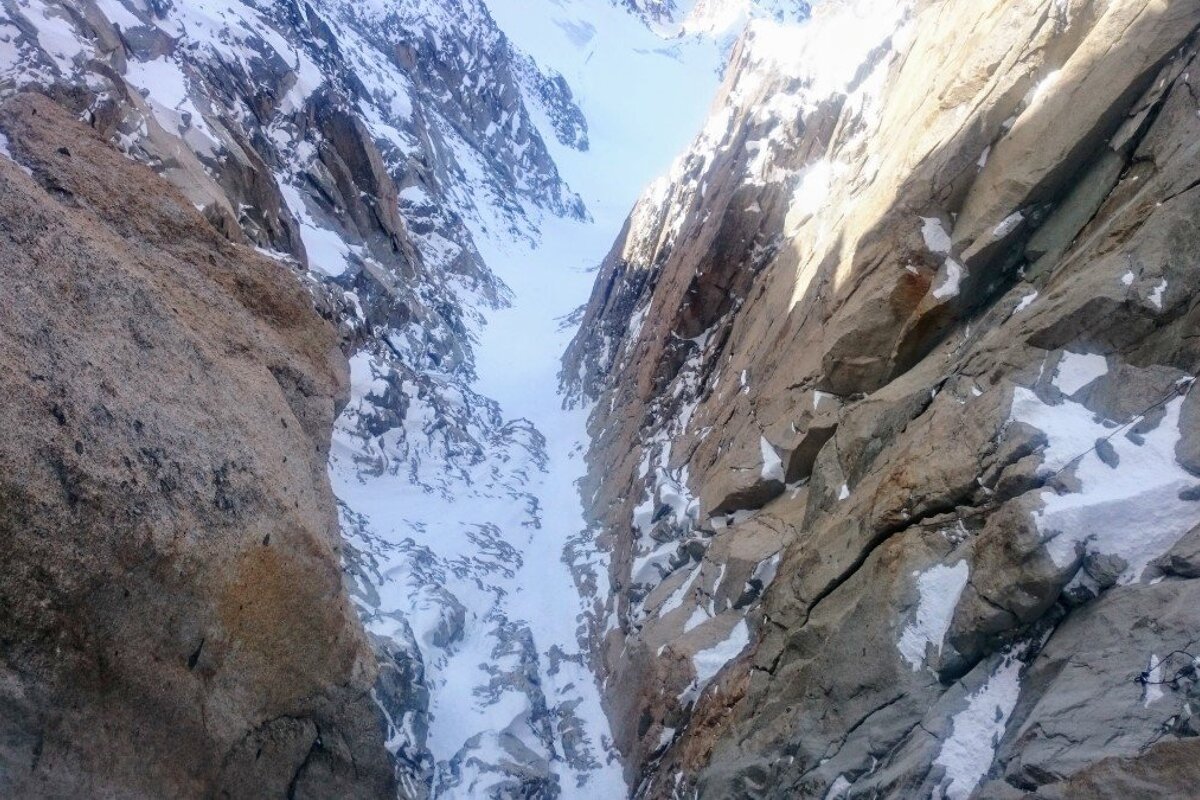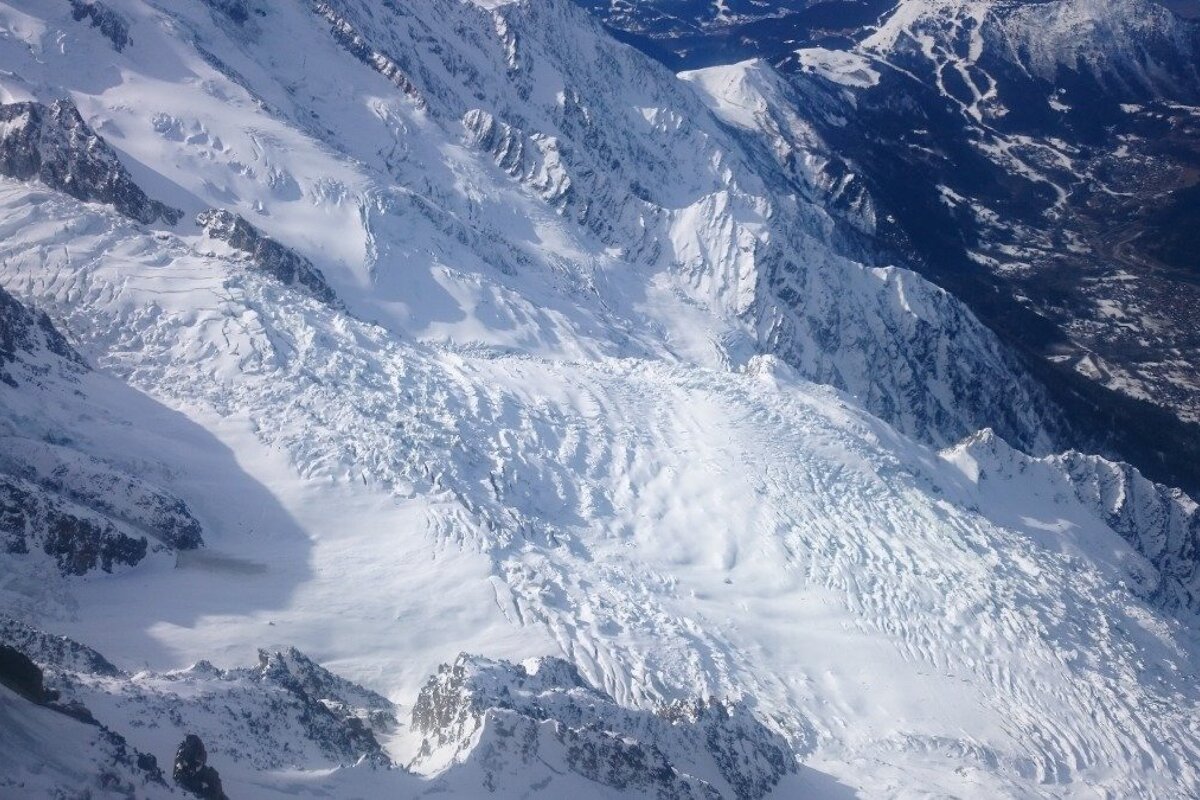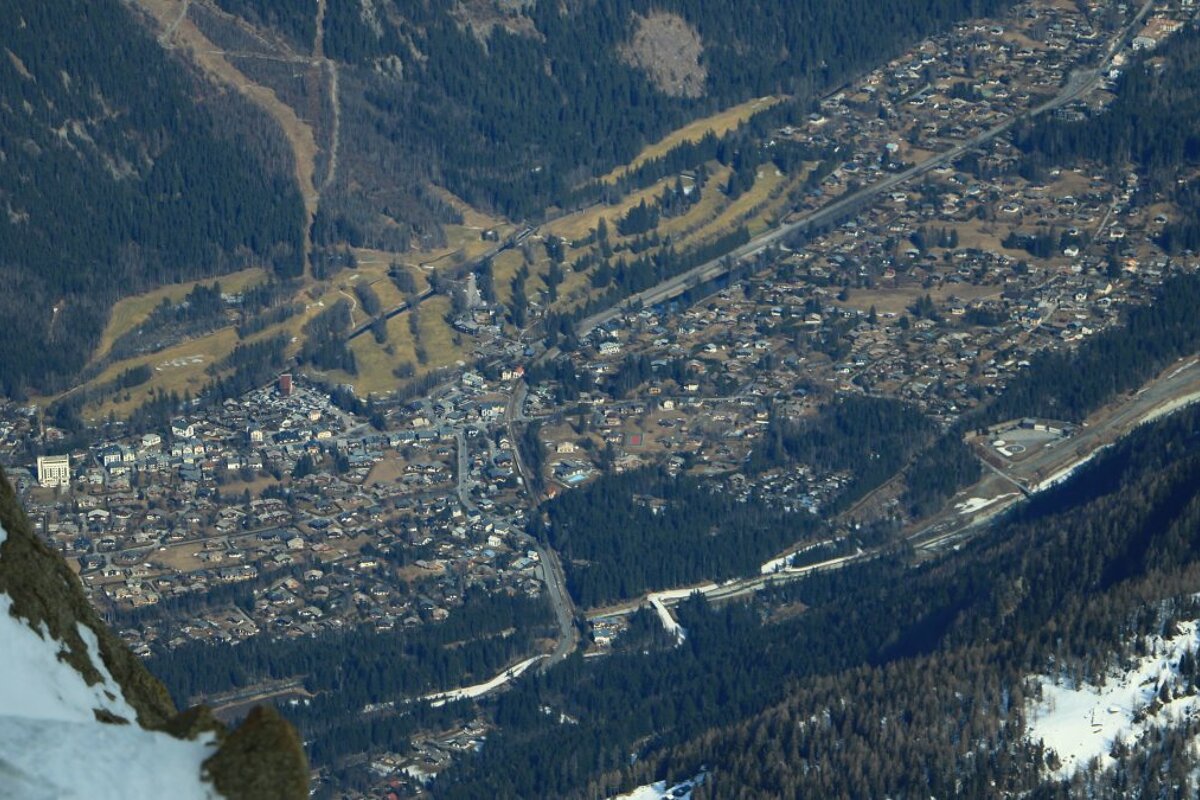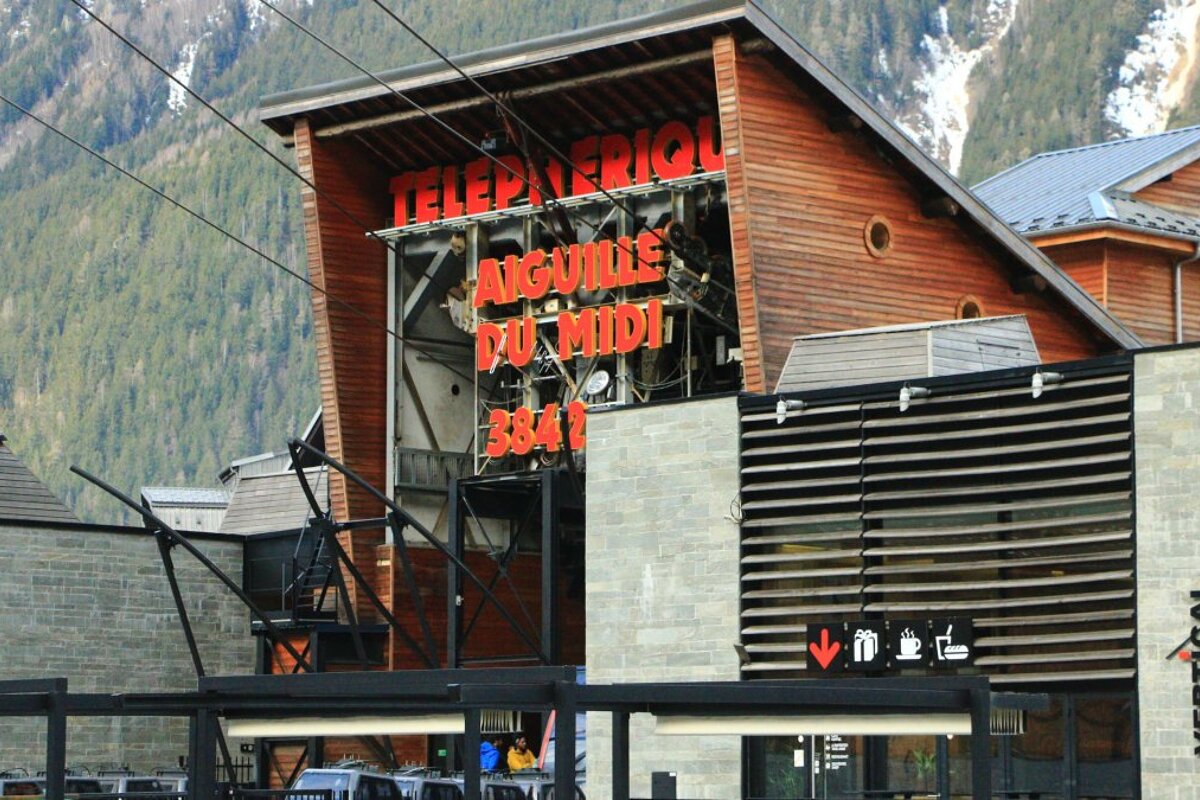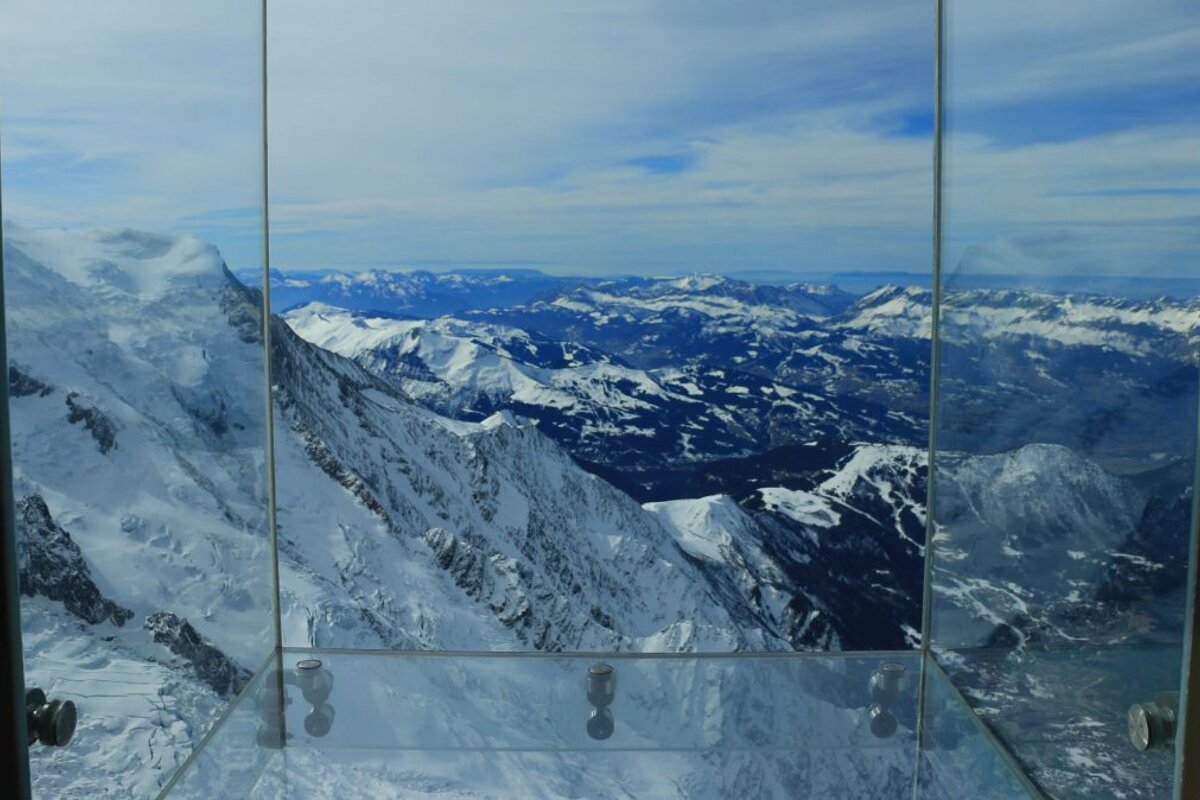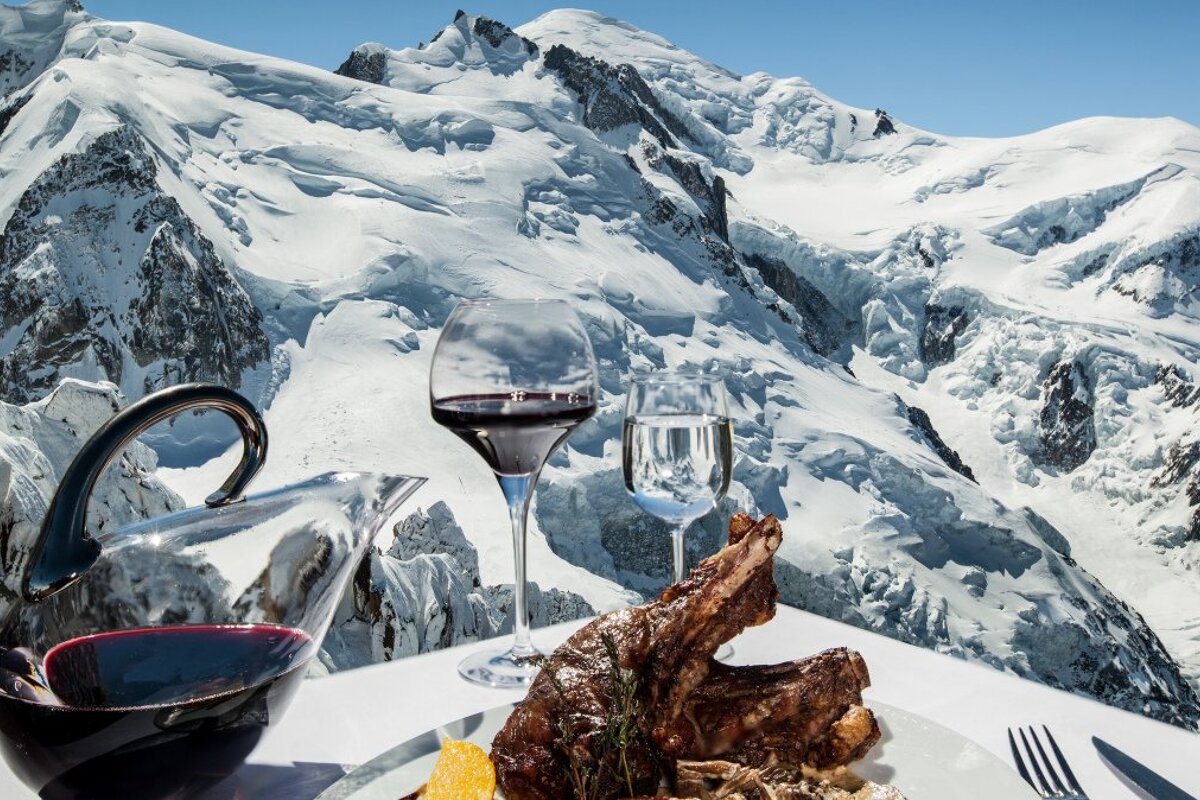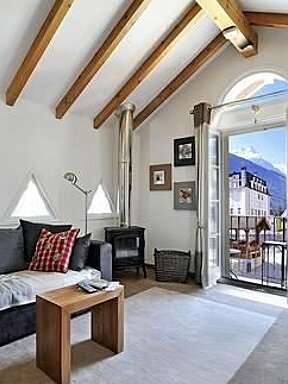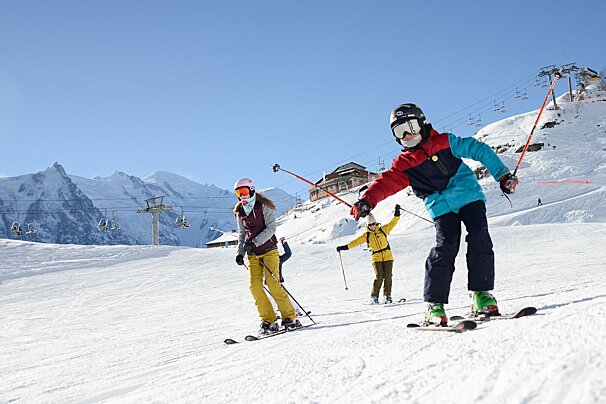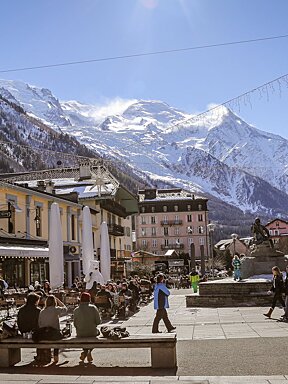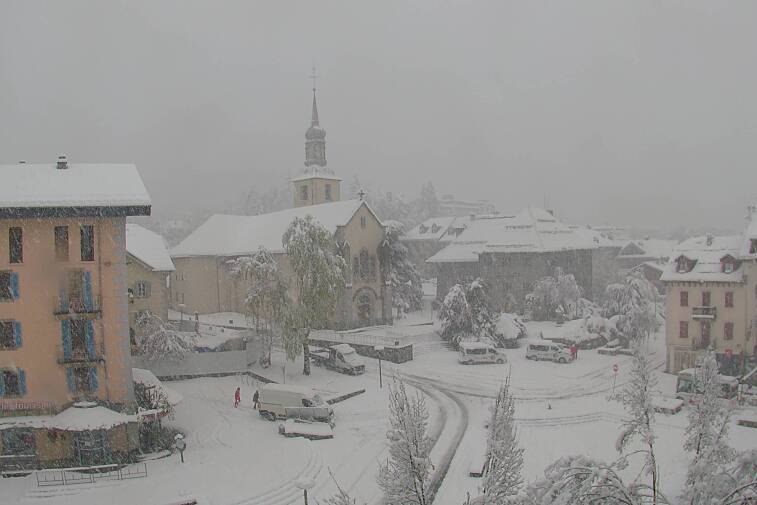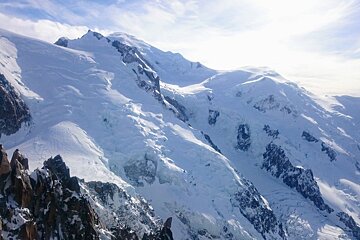
© Stuart Hamilton
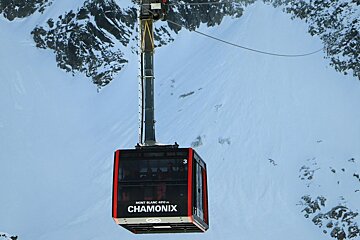
© Stuart Hamilton

© Stuart Hamilton
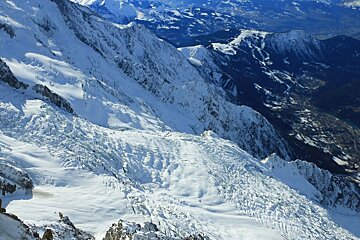
© Stuart Hamilton
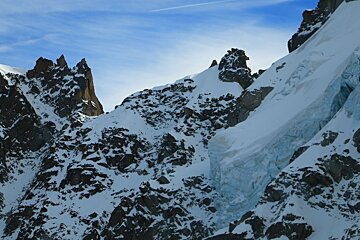
© Stuart Hamilton
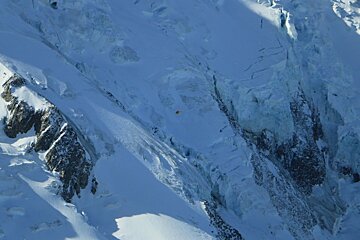
© Stuart Hamilton
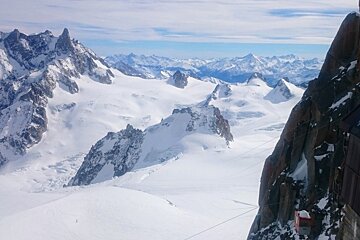
© Stuart Hamilton
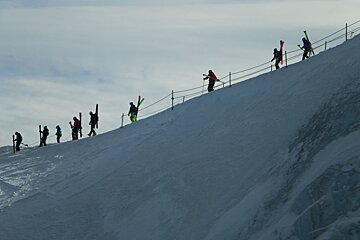
© Stuart Hamilton

© Stuart Hamilton

© Stuart Hamilton
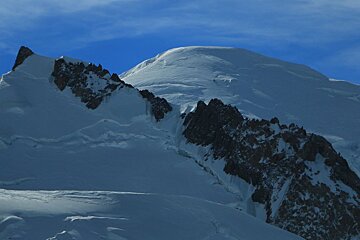
© Stuart Hamilton

© Stuart Hamilton
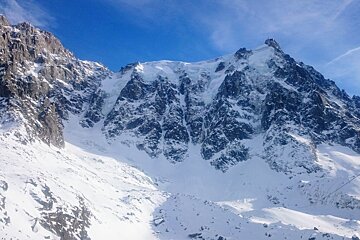
© Stuart Hamilton
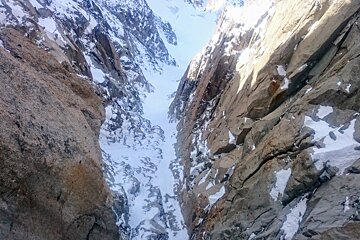
© Stuart Hamilton

© Stuart Hamilton
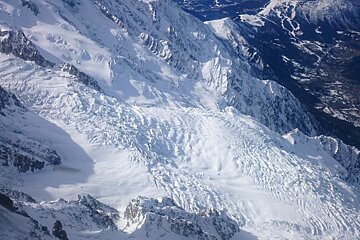
© Stuart Hamilton
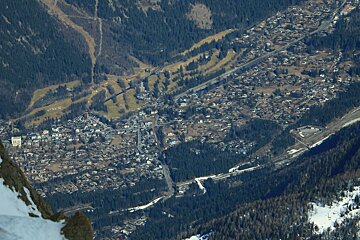
© Stuart Hamilton
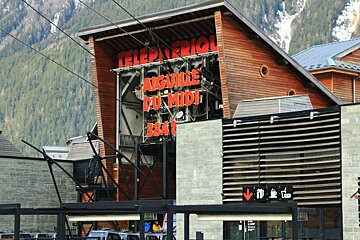
© Stuart Hamilton

© Stuart Hamilton
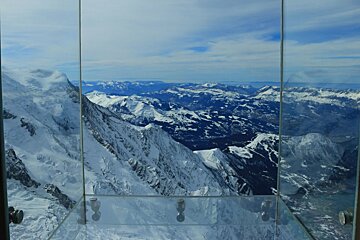
© Stuart Hamilton

© SeeChamonix.com

© SeeChamonix.com

© SERAC
Visiting the Aiguille du Midi in Chamonix
A journey to the top of Europe on the Aiguille du Midi Cable Car
If you’ve visited pretty much any ski resort in the Western or Southern Alps, chances are you’re already familiar with an omnipresent, rather bulbous peak which dominates almost every vista. A peak instantly recognisable to skiers the world over as Europe’s highest; the inimitable, stirring monolith that is Mont Blanc.
The summit of Mont Blanc stands proud at 4810m (15,781ft), the pinnacle of a surrounding massif which contains no less than 11 mountains above 4000m, stretching 46km and 400km² over France, Italy and Switzerland. Mont Blanc itself lies close to the Franco-Italian border, slightly on the French side but with southern flanks tumbling down to Italy. It is visible from Geneva to Grenoble and from Lyon to Dijon. It can be seen from the Vosges, the Jura and the Massif Centrale. It is, in short, colossal.
Watch this
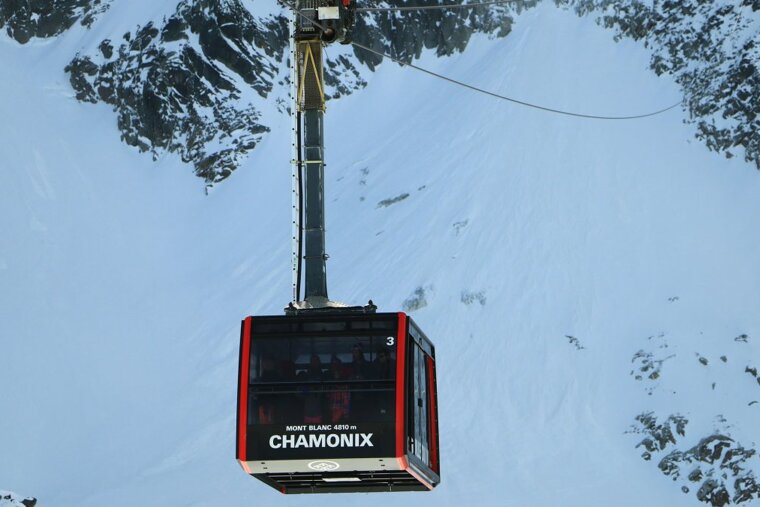
Chamonix & the Aiguille du Midi cable car
Sitting in the shadow of Mont Blanc’s northern edge lies the town of Chamonix, a place of skiing lore and legend, famed globally for its hardcore off-piste, ski touring and mountaineering. The town squeezes through a long winding valley, starkly bounded either side by impossibly steep mountains ascending to the stratosphere above. In the basin looking up, you have to crane your neck skyward to see the summits. The mountains are massive, amplified by the relatively narrow corridor in which Chamonix sits. You are instantly and constantly reminded this is a place of high mountain endeavour, a place not for the faint of heart. There is some serious mountaineering and off-piste to be had here.
Yet, for all the imposing mountain grandeur and daunting landscapes, Chamonix also offers passage for the less experienced to explore the vast ether above. A remarkable cable car system which emanates from the town centre to another perennially visible peak, the towering 3842m Aiguille du Midi. Translated, “Aiguille du Midi” means “Needle of the mid-day” and is so named because the sun passes above its peak at noon when viewed from the local church. Among its many and varied qualities, the Aiguille once served a massive, reliable sundial for locals in a more simplistic, pre-digital age.
The Aiguille is the closest most non-climbers can get to Mont Blanc and offers unrivalled views over the massif, the glaciers and Chamonix valley, not to mention a large chunk of the Alps and surrounding countries.
The cable car holds the world record for the highest vertical climb and is a two-stage, twenty minute journey originating from the valley floor at 1035m. The first leg rises sharply over dense forests before the tree-line slowly gives way to tundra and the cable car plateaus into a gentle amble to Plan de l’Aiguille at 2317m. Here visitors can optionally exit and hike [in summer] to the top station of Montenvers railway, located at the foot of the Mer de Glace, with views of the Glacier des Bossons, Aiguille Verte, the Drus and the Aiguilles de Chamonix. Or, you can just be lazy and do like we did and take the second car to the summit.
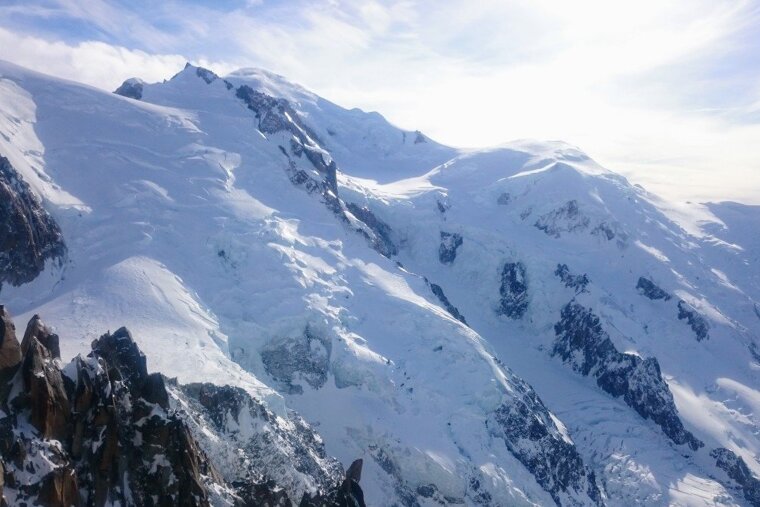
Second stage of the cable car
The second stage is a ridiculously steep ascent to the top station of Piton Nord at 3778m, a ride made all the more impressive by its lack of supporting pillars. A single cable lifts visitors in a seamless flight over Les Pelerins glacier up the North Face of the Aiguille du Midi to the terminus, impossibly perched on the Piton Nord.
It’s difficult to convey just how impressive this cable car is. Viewed from below it seems to hang in a void, suspended in nothingness as the cable lines merge into the distant granite face. You feel an overwhelming sense of awe as you traverse effortlessly up the Aiguille, ancient glacial flows spilling down the vertical sides below you, ears popping more than once on the climb. From the mid station to the summit is 1461m – an elevation greater than the UK’s tallest mountain, Ben Nevis at 1345m – yet the cable car soars to the top station in just ten minutes.
Stepping out at the top you’re faced almost immediately with a narrow supporting bridge which connects the Piton with the Aigulle itself, spanning high above the 55’ degree Cunningham Couloir. Sufferers of vertigo, take note – this is the first of many challenges you’ll encounter on this trip. Also worth noting is the wind. 9 times out of 10, it’s Blowing a hoolie here (technical Scots term) and you’ll also notice a marked difference in temperature from the valley floor.
We went up on an unseasonably warm late February day during the equally unseasonably warm mid-season of 2017, yet still the cold was bracing. Temperatures drop 1°C per 150m and, with Chamonix at an elevation 1035m and the top of the Aiguille at 3842m, there’s a palpable chill at the summit. To save you brain-strain arithmetic, this equates to a temperature change somewhere in the region of 19°C from the valley floor. And this is without factoring the effects of windchill. Wrap up warm, it's cold up there even in summer (-31.2°C was the coldest recorded temperature at the summit). Visitors should also take appropriate eye wear as the sun’s strength is amplified greatly at altitude and compounded by reflection off the snow and ice.
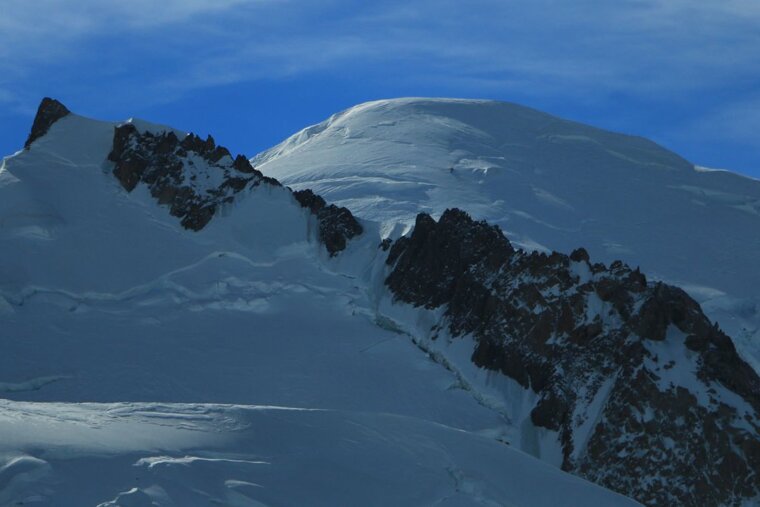
Arriving at the top
Another thing that strikes you as you arrive at the summit (aside from the sheer size and vastness of the massif) is just how much development has been done on this peak. I’m sure in modern times this simply wouldn’t be allowed but, in all its wisdom, the France of old wasn’t quite as ecologically aware as it seems to be now. Of course, this won’t come as news to anyone who’s visited any of France’s more aesthetically-challenged resorts, but it’s still surprising the amount of work done up here given its proximity to Europe’s highest mountain. Nonetheless, the remorseless scale of development has a definite upside: peaks that would otherwise remain the preserve of skilled climbers and mountaineers are now accessible to the rest of us.
The top of the Aiguille has been pretty much hollowed out to form an intricate labyrinth of rooms and corridors that weave their way through the rocky, mainly granite peak. This in itself is impressive enough but it also allows space for multiple exhibitions, displays and viewing platforms which greatly enhance your time at the top.
The views over Mont Blanc and the valley are breath-taking, giving you an up-close vista over age-old, splintered ice flows which have cracked to form huge crevasses as they’ve edged their way down the mountainside. It feels almost as though you’re at the epicentre of the Alps, enormous peaks spilling in all directions punctuating the horizon as far as the eye can see. There are of course other great mountain views in the Alps. I’m reminded of the outlook from Pic Blanc in Alpe d’Huez, Zermatt’s/Cervinia’s Gobba di Rollin, Stubai’s Top of the Tyrol, however, none has the same aura as the view from the Aiguille du Midi.

What to see at the Aiguille du Midi
There is a surprising amount see in the summit’s warren of tunnels, including:
Altitude Zone
An exhibition on the effects of altitude and hypoxia. The station has been used in multiple experiments to study the effect of mountain sickness, pulmonary oedema and humans’ ability to adapt to altitude. Above 3500m is considered very high altitude so be advised, those with heart or breathing problems are not advised to take this trip.
Espace Vertical
A fascinating glimpse into the history of climbing and Alpinism on the Mont Blanc massif, including displays of modern and traditional climbing equipment, an interactive 3D map and various videos. At 3777m this is the highest museum ever built.
History area
Learn the history of the cable car construction including a view over the massive drive wheels, whirling as they lift visitors to the summit.
Espace Mont Blanc
A indoor viewing gallery with breathtaking views over the Mont Blanc and brief history of notable ascents made on the mountain.
The Pipe
A new attraction which allows full 360 passage around the summit in a tube suspended thousands of feet above the glacier.

Things to do at the Aiguille du Midi
For those who want to fully experience the Aiguille, there are also plenty of things to do, some of which will even make you feel as though have joined the hundreds of mountaineers that use this area daily as their playground.
Lift to the summit Terrasse
An elevator cut through the pinnacle of the Aiguille which gives access to a high viewing terrace surrounding the massive TV transmitter on the summit (the iconic metal shard on the peak, visible from miles around). Note, queues are common here so factor in at least a 15-minute wait to access (longer in summer months). The views are worth the wait though.
Le Pas dans le Vide / Step into the void (free)
Accessed from the summit lift and Terrasse 3842, Step into the Void is a 2.5m glass box suspended from the side of the Aiguille, 1000m above the glaciers below. Vertigo sufferers should probably avoid.
Accessing La Vallée Blanche
A tunnel cut through sheer ice walls leading to the famed Ice Steps allowing climbers and skiers access to the Vallée Blanche descent and beyond. At 20km long with a vertical drop of 2700m, the Vallée Blanche is one of the most famous off-piste routes in the world. Expect to see hardened mountain types, bedecked with crampons and ice axes preparing to exit onto the glacier.
Countless viewing platforms
With 360’ access around the summit, you are spoiled for choice with views that extend far into Italy, France and Switzerland. Were it not for the cold, you could spend hours up here.
The Panoramic Mont-Blanc gondola (open June to September)
A 5km gondola ride linking to the Pointe Helbronner above Courmayeur on the Italian side, over the Glacier du Géant. This glacier is a huge permanent icepack which feeds the legendary Mer de Glace and Vallée Blanche.

Where to eat & drink at the Aiguille du Midi
Le 3842 Restaurant: One of the world’s highest restaurants serving local Savoie fare. Booking is advised as it only seats 26 people.
Summit 3842 Cafe: Open every day the cable car is running, this cafe is a good spot for grabbing a quick bite to eat and a drink whilst admiring the views.
Le Vertical Café and shop: Pick up gifts, souvenirs and snacks at the bottom of the lift station as you return to Chamonix.
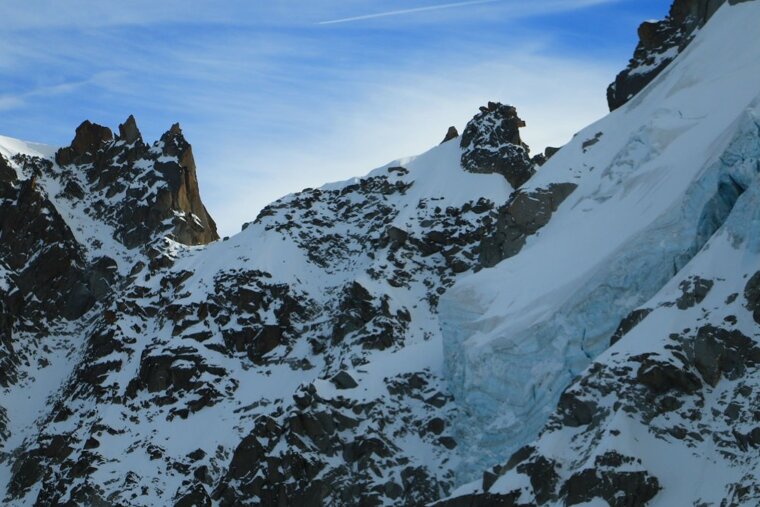
How long does a visit to the Aiguille du Midi take?
An average trip on the summit lasts around two to three hours, although somehow we found ourselves there closer to five. You can take as long as you like on a visit although in winter the last lift up is at 15:00 and the last decent at 16:30. In summer the last trip up is at 16:30 and the last descent is at 17:30 or 18:00, so plan your visit accordingly.
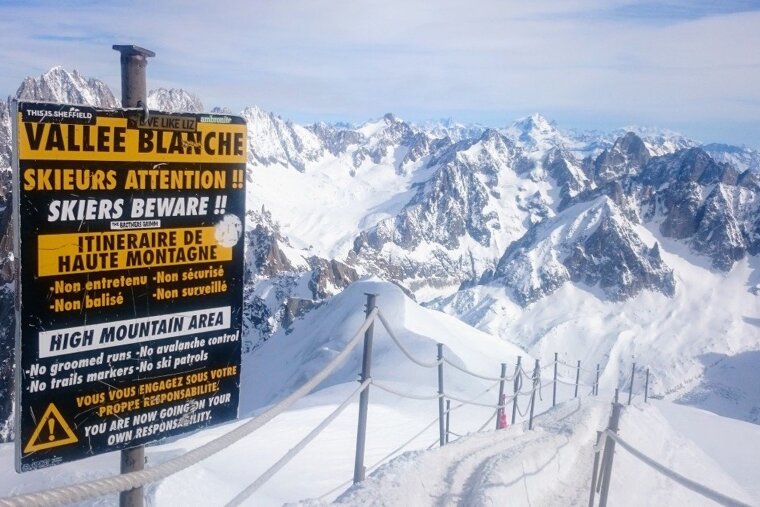
When to visit the Aiguille du Midi
The Aiguille du Midi is open most of the year, only closing due to bad weather and for annual maintenance in Autumn (dates are not fixed). Check the winter and summer timetables for details before travelling to avoid disappointment.

How much does a visit to the Aiguille du Midi cost?
At the time of writing, a trip up the Aiguille du Midi is currently €60 per person [unless you have an MBU lift pass in which case it's included]. It offers a rare perspective over a vast glacial kingdom that, let’s face it, very few of us will ever see by any other means. When you consider we were there for five hours, €60 is very reasonable for such a unique trip.
You feel a tangible sense of privilege and awe, getting so close to otherwise inaccessible terrain, at an altitude so high it strips your body of oxygen. It is an exceptional experience and one I’d highly recommend if you are in any way interested in mountains. To be honest, the cable car ride alone is worth the fee.
Prices and reservations at the time of writing (all prices ex VAT)
- Family pass: 186 € (2 adults + 2 children & 3rd, 4th and 5th of the same family are free)
- One way ticket for adult: 49 €
- Round-trip ticket for adult: 60 €
- One way ticket for a child (5-14 years): 41.70 €
- Round-trip ticket for a child (5-14 years): 51 €
- Free entry for children < 5 years
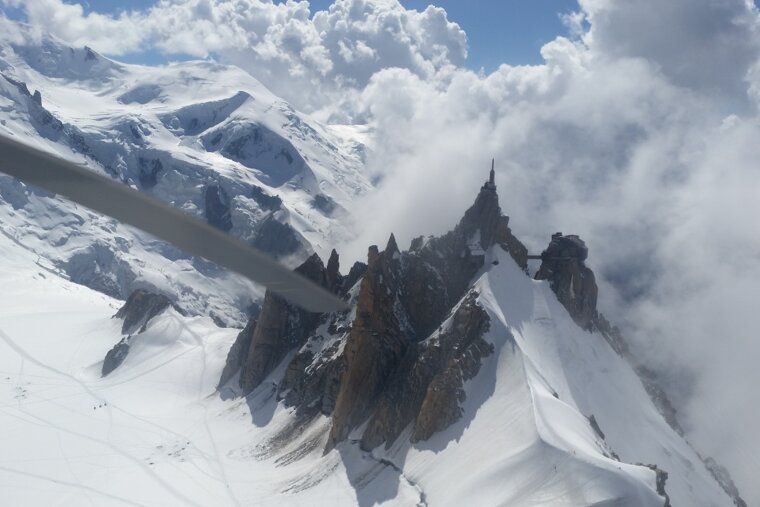
How to book the Aiguille du Midi
We booked online and were allotted a specific ride time and advised to attend half an hour early. Even in the quieter winter months, it’s a good idea to arrive promptly as the queues were still quite large. I can only presume pre-booking and punctuality is even more important in the busier summer months. The cable car attracts nearly half a million visitors per year, so pre-booking is definitely recommended. If you're unable for some reason to use the online booking system, you can book in person at the lift station.
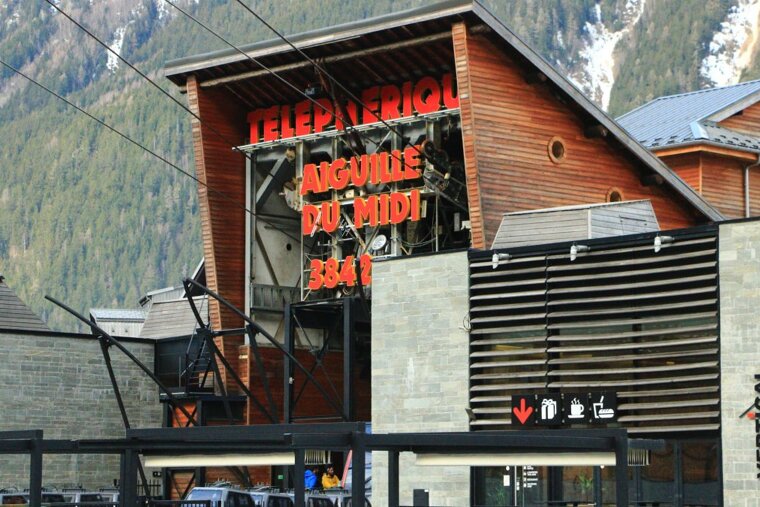
How to get to the Aiguille du Midi
Getting to the Aiguille du Midi is easy. You'll find the lift station in Chamonix Sud, which you can access easily on foot from anywhere in Chamonix centre. By bus, get off at Chamonix Sud and cross the road opposite the bus terminus. Head onto Rue du Lyret and keep walking. You'll find the base station of the Midi a few hundred metres along on the right hand side.
By car, it's best to park at the Grepon car park, just off the main highway, the Route Blanche. At the far end of the car park there's a tunnel taking you under the Route Blanche, which leads you towards the back of the Midi lift station. Head round to the main concourse at the front to buy tickets.
By train get off the Mont Blanc Express at the Aiguille du Midi stop and descend the road which leads you directly to the front of the Aiguille du Midi base station.
Note
This is high mountain terrain and those with breathing difficulties, heart problems or other significant medical issues are not advised to take the trip. Consult your doctor if in doubt. Children under 2 years of age are not allowed.
Writer Stuart Hamilton is the Creative Director of iRide Ski and Snowboard App - a new skiing and snowboarding app, available now on Apple iOS and Android.
